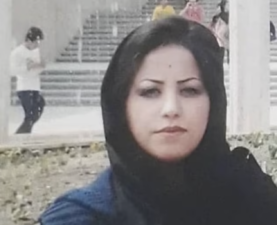Last month, a woman wearing a Muslim hijab headscarf presented the headlines on an Egyptian television news program, becoming headline news herself. So why the alarm when anchor Fatma Nabil appeared on Channel 1 (one of several state-run TV stations) wearing an off-white hijab that covered her hair and neck? And why is this issue connected to the environment?
Fatma Nabil became the first anchor to wear a hijab on Egyptian State television since the 1960s, breaking with a code of secular dress that had barred the on-TV wearing of Islamic head coverings. Most Egyptian women choose to wear some form of Islamic headscarf.
[youtube]http://youtu.be/zAL6dDj_2s4[/youtube]
Immediate online debate erupted over whether Nabil’s appearance might be part of a strategy by President Mohamed Morsi, a former leader of the Muslim Brotherhood, to push increased Islamic sensibility on Egyptian society.
According to the official state news agency MENA, newly appointed information minister and Brotherhood member Salah Abdel-Maqsoud said that at least three other veiled women will also be appearing, a radical change from the standards established when state TV was founded fifty years ago. Network policy didn’t explicitly disallow head scarves, but in practice they were tolerated for off-screen employees only.
“Why is the veil denounced in Egypt while 70% of Egypt’s ladies are veiled?” Abdel-Maqsoud asked, according to Egyptian newspaper Al Masry Al Youm. “It’s a shame that veiled women appear on Arab and international channels while they don’t in Egypt.”
In the following video clip, Al Jazeera’s Rawya Rageh explains the significance of the lifting of the ban on the veil:
[youtube]http://youtu.be/1aiuIIbhsMc[/youtube]
For years, veiled women have presented the news on private Egyptian satellite TV. Nabil previously worked for the Brotherhood’s satellite station, Misr 25, where her appearances were always in hijab. She isn’t affiliated with the Brotherhood, and feels that only qualifications and not appearances should be a determining factor in who appears on TV.
There’s no difference between forcing women to wear hijab and forcing them to not wear. The ultimate decision must be that of the individual. The specific ban for newscasters could be viewed as years of discrimination. Isn’t ending inequity always progress?
Environmental rights are increasingly being adopted as a subset to human rights, featuring large in demands made since the beginning of the Egyptian revolution. Basic human freedoms intertwine with environmental rights because both aim to protect the quality and continuity of life.
Speaking to Egypt Independent, human rights activist Sally Sami reaffirmed the need to view all forms of protest as part of a comprehensive movement rather than separating platforms with different labels.
“Everyone who took to the streets [since] 25 January seeks to re-write our relationship as citizens to the state,” she says. “It is easy to concentrate on the urban protests, which are focused on political and human rights issues, while overlooking the more economically and environmentally related forms of protest taking place in other governorates.”
Conservation of natural resources, pollution prevention and land use regulation stand side-by-side with freedoms of self-expression and political rights. Mohamed Nagi, executive director of the Habi Center for Environmental Rights, told Egypt Independent that the next step is to pass binding legislation regarding environmental human rights. “As we discuss rewriting our constitution,” Nagi says, “we need to make sure there are articles clearly stipulating the need to guarantee and protect environmental rights.”
This is essential for enforcing Egypt’s environmental laws, which have not been properly implemented, and also strengthen the role of civil society on the ground. Nagi highlights the need for public and media pressure alongside the creation of strong coalitions with others seeking similar rights.
Allowing women the freedom to make their own choice isn’t something to incite bogeyman fears, rather, it can be viewed as a sign of an opening society: one that is opening enough to also embrace green policy and practices.





M Radwan – thanks for the comment.
I used to see human rights as purely relative to civic freedoms (life, liberty, happiness) – but as I became more involved in environmental matters I’ve come to see environmental rights as an integral part of the human experience.
Clean water, clean air, available food are the building blocks of life – all forms of life.
I quoted activist Sally Sami as I see her statement as spot on: we ought to take a comprehensive view of all positive rights movement rather than separating platforms with different labels. I think progress in one area can only bode well for progress in all others.
i dont understand why the author needed to connect hijab freedom with environmental rights in one article…even though i do agree with her on both issues, the link is a bit weak. it appears she just chose 2 topics to write about and put them in same piece